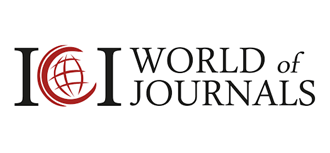
Lupine Publishers Group
Lupine Publishers
Menu
ISSN: 2637-4544
Short Communication(ISSN: 2637-4544) 
Endometrial Myomectomy: A New Soul in Caesarean Myomectomy Volume 2 - Issue 1
Şafak Hatirnaz*
- Samsun Medicana International Hospital, Turkey
Received: May 16, 2018; Published: May 21, 2018
Corresponding author: Şafak Hatirnaz, Samsun Medicana International Hospital, Turkey
DOI: 10.32474/IGWHC.2018.02.000129
Abstract
Study objective: To introduce a new surgical technique to the clinical practice by comparing the perop and early postop outcomes of endometrial myomectomy is to serosal myomectomy during caesarean section. 22 cases which consented for endometrial myomectomy were enrolled to Group1 and 24 cases which had serosal myomectomy were included in the control group as Group 2 that has been applied in our practice. Posteriorly located myomas and asymptomatic cases were excluded in both groups. All findings related to the myoma including location, size and the number of the myomas were recorded. Blood loss during surgery, haematological course during pre and postoperative period, the need for blood Transfusion, total time of surgery, and hospital stay was also documented.
Conclusion: Endometrial myomectomy seems to be a safe, easily applicable surgical technique as compared to serosal myomectomy. The risk of adhesion formation and intra operative blood loss are less.
Keywords: Endometrial, Caesarean Section, Myomectomy, Complications
Introduction
Confronting leiomyomas during the course of pregnancy and/ or incidentally during caesarean sections becomes more prevalent due to postponing childbearing and advanced maternal age. The prevalence of leiomyomas in pregnancy ranges from 0.37% to 12% in the current literature [1-3]. Performing myomectomy during caesarean section is a hot topic of debate though huge number of publications supporting caesarean myomectomy. Weak outcomes were observed from meta analyses and quality of evidence from the study was low and sporadic, it seems that the controversy will continue until randomised controlled large scale studies with long term outcomes held to finish the debate. Heavy bleeding and increased surgical morbidity, prolongation of surgical time, the need for blood transfusions and a longer hospital stay are top concerns about caesarean myomectomy when it is performed during caesarean section [4]. However, accumulating the number of publications to support caesarean myomectomy in recent years is merging. The main concern of the serosal myomectomy during caesarean section is to remove leiomyomas to avoid additional surgery and diminish the morbidity arises from second surgery. Tinelli et al [5]. break the chains and presented that serosal myomectomy had a minimal impact on blood loss and found no difference in blood transfusion rates when it performed during caesarean section [5]. Endometrial myomectomy is an inspirational technique to reduce the risks attributed to the serosal myomectomy. It is well known that uterine size increases 20 times during pregnancy and uterine volume increases 1000 times while myomas during pregnancy can grow 25% of their size which means that myomectomy during caesarean section will have less surgical scar than a myomectomy of non pregnant uterus. But reaching from the serosal site still has the risk of adhesion formation and risk of haemorrhage during surgery. Performing myomectomy from the endometrial site is inspitared from the hysteroscopic myomectomies where myomas are removed from the endometrial site without suturing the endometrium. Here in this technique, we use the same principle to remove the leiomyomas from the endometrial approach a soon as the baby and the placental materials taken out. Uterus itself is the main supporting factor since uterine involution diminishes the surgical site, the death space of myoma capsule and squizes the large blood vessels and haemorrhage risk decreases. In cases where the surgical site is less than 3cm, no need to put sutures to the endometrium in order to diminish the chance of Ashermann syndrome. 46 cases were enrolled in this retrospective study. Endometrial myomectomy started to be performed in our clinic as a routine practice since 2013. The study group (Group 1) consisting of 22 consecutive patient underwent endometrial myomectomy. The control group was matched based on the same anterior uterine wall leiomyoma cases (Group 2) performed again in the same institution between 2013 and 2014. All 46 leiomyoma cases were symptomatic and diagnosed with Mild pelvic pain in the course of pregnancy and clinically accepted as symptomatic myomas after the differential diagnosis. Exclusion criteria was posterior uterine wall leiomyoma, pedunculated serosal leiomyoma, patients underwent both endometrial and serosal myomectomy at the same time cases with asymptomatic leiomyoma were also studied. Caesarean myomectomy cases were collected from the operation records and their files were derived from the archives and patients were divided into two groups.
Descriptions of Surgical Method
Endometrial Myomectomy(EM)
After removal of the baby and the placenta, uterine cavity is swept by gauze and uterine incision is controlled for any bleeding. Uterine surface and cavity are evaluated thoroughly for myomas and anatomical locations and sizes are evaluated quickly. Leiomyoma were palpated and topographically localized and pushed from the serosa site towards endometrium for marking the surgical site. Leiomyoma
Visualized from endometrial site were incised and was removed from their capsule by blunt and sharp dissections. Vessels at the bottom of leiomyoma were clamped and sutured. Myomas are removed from a small incision made on the endometrium. Myomas close to the lower uterine segment are taken out by incisions made between endometrium and myometrium. Any bleeding sites were sutured if present and if no major bleeding, the capsule or death spaces are Volume 7 • Issue 1 • 1000184 sutured with no. 1 vicryl in a separated manner. Endometrium is sutured with an absorbable suture if the defect site is bigger than 3cm. difficult myomas are managed by using bivalves to open the endometrial cavity for a safer surgical procedure. Uterus itself is the major haemostatic factor of the surgery, since the rapid involution of the uterus squizes the capsule and suture sites thus minimizes endometrial scarring. Following careful evaluation and haemostasis, lower uterine segment incision is closed by no 1 vicryl in a continuous non-locking manner and abdominal layers are closed carefully. Number of the leiomyoma, leiomyoma sizes, amount of blood lost during this procedure, and operation time all were recorded. Caesarean myomectomy has been consistently applied in our setting for 17 years. Beginning from 2013, endometrial myomectomy has been started and selected as the caesarean myomectomy of choice instead of classical serosal approach because in serosal approach, the bleeding, operative time, myometrial damage, and adhesion formation possibilities are high compared with endometrial myomectomy. The rate of suturing the endometrium during surgery is very low and uterine involution itself shrinks the surgical site to a lesser size. Main question concerning endometrial myomectomies is the possibility of intrauterine synechia or Asherman Syndrome. For this reason, all patients were evaluated at the 1st week after surgery and evaluated the surgical sites for any death spaces and endometrial hypo echogenicity and fluid were recorded. All the patients were invited 40 days after the surgery for saline infusion sono hysterography (SIS) and SIS findings of all 22 cases revealed that no any case had synechia in the uterine cavity. The importance of SIS has been rising because SIS is simple and less invasive investigation for determining intrauterine pathologies including adhesions. SIS seems an adjunct to other diagnostic tools [6]. Endometrial myomectomy has less blood loss during the course of caesarean myomectomy, not expanding the total operation time, and almost no adhesion formation on the serosal surface of the uterus. There seems no statistically significant difference between the two techniques concerning about the hospital stay. In conclusion, this inspirational surgical method of caesarean myomectomy, endometrial myomectomy, has less adhesion formation risk, less blood loss during surgery and. This new surgical technique is the first in the literature comparing one caesarean myomectomy technique with the other. Large scale future studies needed to show mid-term and long term outcomes of this surgical approach. Endometrial myomectomy seems safe and reliable compared to classical serosal myomectomy during caesarean section.
References
- Laughlin SK, Baird DD, Savitz DA, Herring AH, Hartmann KE (2009) Prevalence of uterine leiomyomas in the first trimester of pregnancy: an ultrasound-screening study. Obstet Gynecol 113(3): 630-635.
- Exacoust C, Rosati P (1993) Ultrasound diagnosis of uterine myomas and complications in pregnancy. Obstet Gynecol 82(1): 97-101.
- Kwawukume EY (2002) Myomectomy during cesarean section. Int J Gynaecol Obstet 76: 183-184.
- Park BJ, Kim YW (2009) Safety of cesarean myomectomy. J Obstet Gynaecol Res 35(5): 906-911.
- Tinelli A, Malvasi A, Mynbaev OA, Barberra A, Perrone E, et al. (2014) The surgical outcome of intracapsular cesarean myomectomy: a match control study. J Matern Fetal Neonatal Med 27(1): 66-71.
- Seshadri S, Khalil M, Osman A, Clough A, Jayaprakashan K, et al. (2015) The evolving role of saline infusion sonography (SIS) in infertility. Eur J Obst Gynecol Reprod Biol 185: 66-73.

Top Editors
-

Mark E Smith
Bio chemistry
University of Texas Medical Branch, USA -

Lawrence A Presley
Department of Criminal Justice
Liberty University, USA -

Thomas W Miller
Department of Psychiatry
University of Kentucky, USA -

Gjumrakch Aliev
Department of Medicine
Gally International Biomedical Research & Consulting LLC, USA -

Christopher Bryant
Department of Urbanisation and Agricultural
Montreal university, USA -

Robert William Frare
Oral & Maxillofacial Pathology
New York University, USA -

Rudolph Modesto Navari
Gastroenterology and Hepatology
University of Alabama, UK -

Andrew Hague
Department of Medicine
Universities of Bradford, UK -

George Gregory Buttigieg
Maltese College of Obstetrics and Gynaecology, Europe -

Chen-Hsiung Yeh
Oncology
Circulogene Theranostics, England -
.png)
Emilio Bucio-Carrillo
Radiation Chemistry
National University of Mexico, USA -
.jpg)
Casey J Grenier
Analytical Chemistry
Wentworth Institute of Technology, USA -
Hany Atalah
Minimally Invasive Surgery
Mercer University school of Medicine, USA -

Abu-Hussein Muhamad
Pediatric Dentistry
University of Athens , Greece

The annual scholar awards from Lupine Publishers honor a selected number Read More...















